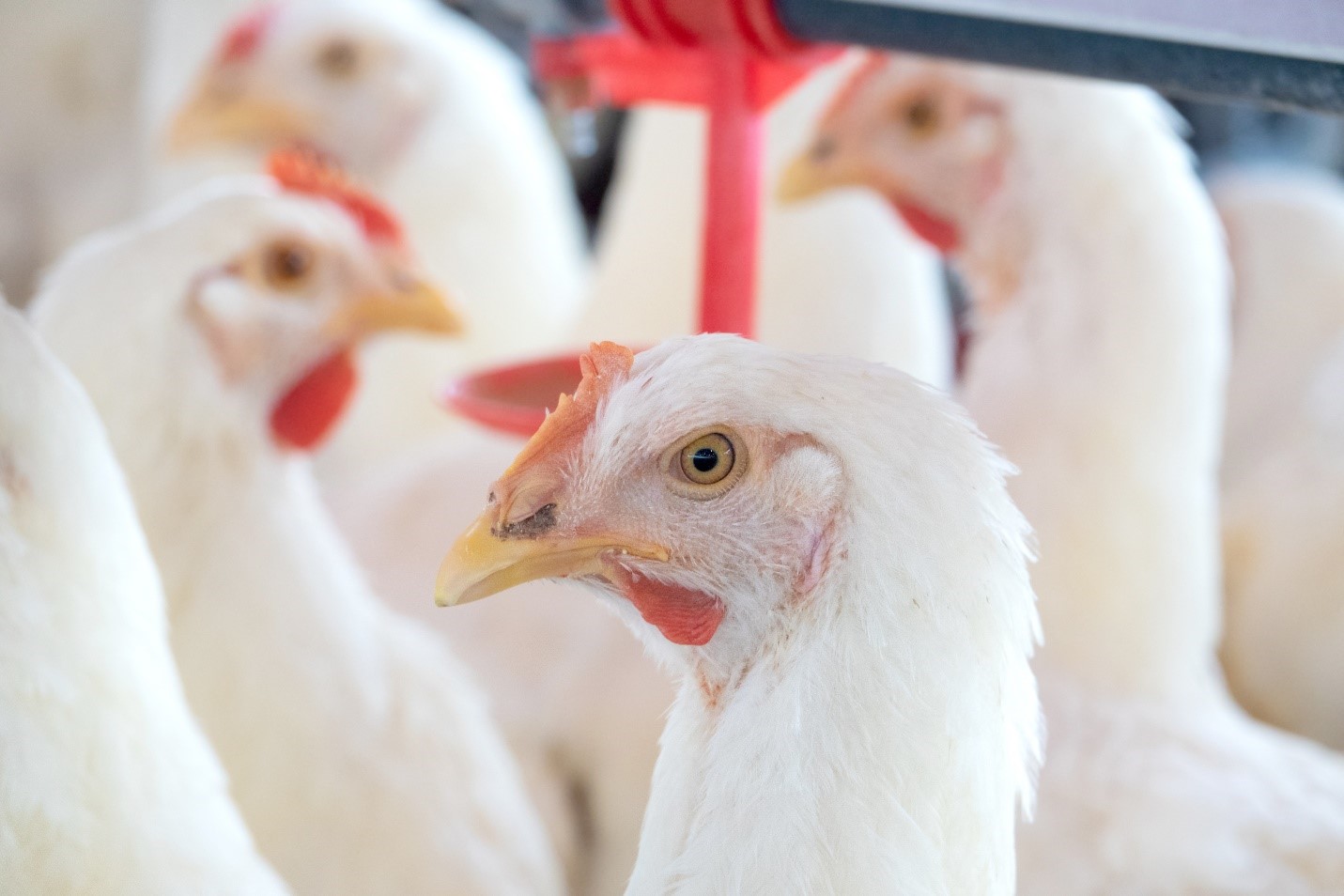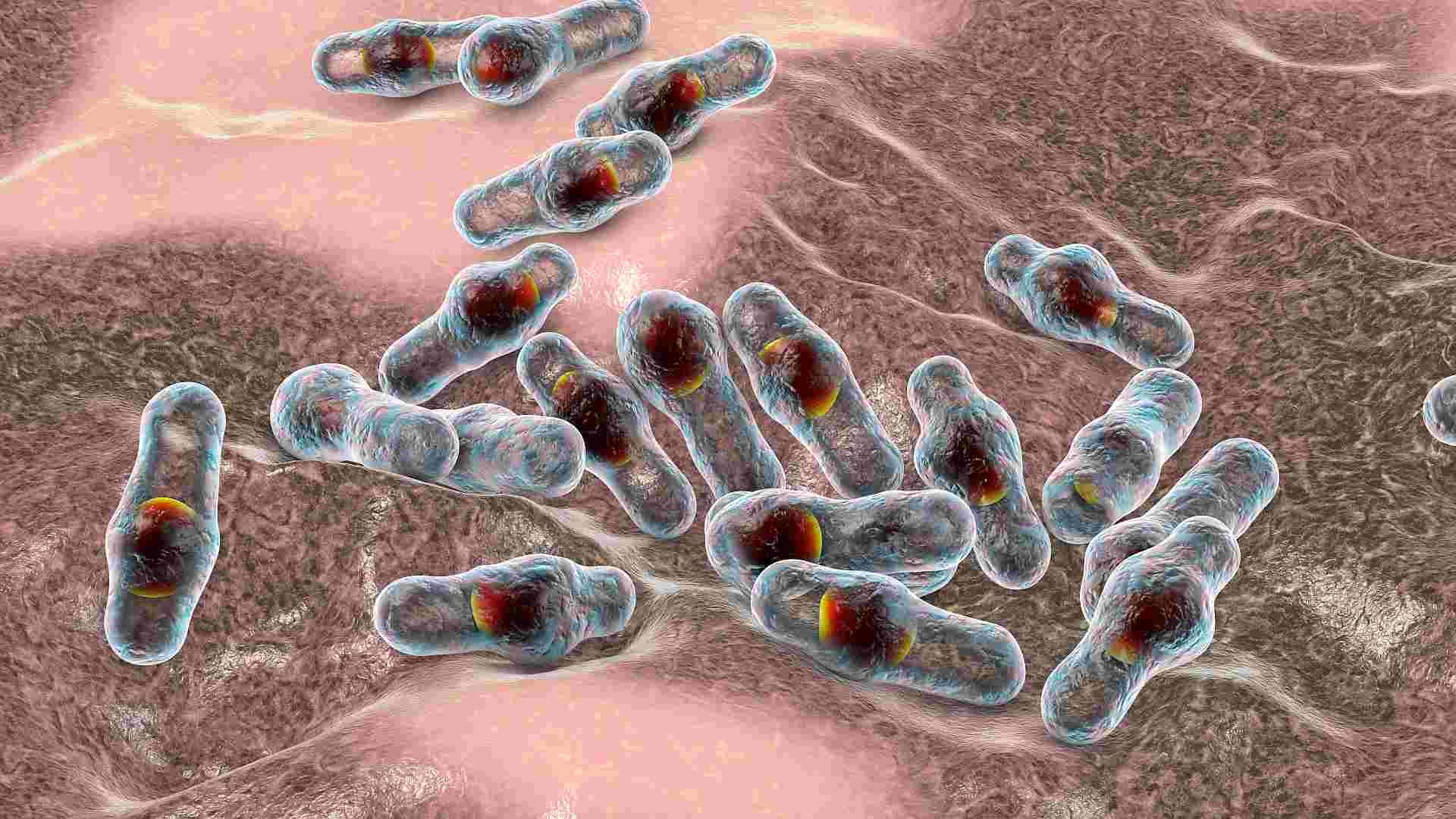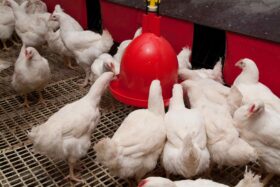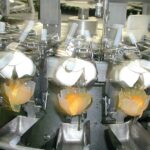By T.J. Gaydos
Control of Necrotic Enteritis (NE) can be one of the most difficult challenges in a system without the availability of antibiotics. In addition, NE is a costly disease because of mortality and loss of performance. Necrotic enteritis is a multifactorial disease that requires damage to the intestinal mucosa, disruption of the intestinal microflora, and a toxin-producing strain of Clostridium perfringens. If any one of these three items is removed or lessened, the severity or incidence of NE will be reduced.
The 3 must-haves for antibiotic-free necrotic enteritis control in poultry
1. Prevent mucosal damage

The most common cause of damage to intestinal mucosa in broilers is excessive cycling of Eimeria maxima. The ubiquitous nature of this parasite in poultry production makes it one of the most important contributors to NE. This species of coccidia is most relevant with respect to NE because its life cycle invades deeper into tissues than other species leading to more damage to the intestinal mucosa.
The life cycle of coccidiosis lasts roughly seven days, with each cycle producing exponentially higher numbers of the parasite. Three consecutive replication cycles are needed to produce immunity. The biology of E. maxima is a significant reason why NE commonly occurs around 18-21 days. However, many other things may damage the intestinal mucosa, including mycotoxins, worms, and rancid fat. Managing all sources of mucosal disruption are critical to preventing and controlling NE.
2. Support the microflora
The importance of the microbiome on health is well known; the ability to modify the microbiome to a more appropriate or healthy status is a more difficult challenge. There is a tremendous volume of research in all species about the impact and importance of intestinal microflora on immunity, health, and disease. The microflora is not static but rather a dynamic community of microorganisms that change with bird age, time of day, composition of the diet, and treatment with antibiotics or other additives. Management of intestinal microflora is a very difficult process because its development and manipulation are not fully understood.
Any significant feed formulation or feed form change is a stress event for intestinal microflora. Feed changes are thus high-risk periods for the development of NE. It is a best practice to avoid feed changes when birds are in the NE risk window. It is important to support the intestinal microflora with either in-feed or in-water products to improve intestinal health during feed changes.

It is important to avoid feed outages. After a feed outage, the disruption to the microflora and the increase in mucus production increases the likelihood of an NE outbreak in the following days. Preemptively adding a water additive to improve intestinal health directly after a feed outage can reduce the risk of NE in the flock.
When managing intestinal microflora: probiotics, prebiotics, plant extracts, enzymes, and organic acids are the most commonly used tools. Each of these product classes interacts with the bird and its flora in a different way and selecting additives with complimentary modes of action is critical to the success of the program. Direct colonizing organisms like Lactobacillus spp. can help to directly change the microflora, providing a more mature and healthier microbiome.
Prebiotics such as mannan- and fructo-oligosaccharides provide a food source for beneficial microorganisms and can interact directly with the immune system of the bird. Plant extracts can have antimicrobial or anti-inflammatory properties that can also modulate the microflora by impacting the growth and metabolism of different species of microorganisms in the intestine.
3. Limit Clostridium perfringens growth
It is not possible to eliminate toxin-producing C. perfringens from the environment. Clostridia are spore-forming microorganisms that are very resistant to disinfectants. However, it is possible to manage the abundance of these microorganisms in a system through proper litter management, sanitation, and disposal of mortality.
A house that has a history of NE should have the litter completely removed and the environment cleaned and disinfected as much as the facility will allow. New clean shavings should be brought into the house at a sufficient depth to limit access to the floor. Several non-antimicrobial feed and water additives have shown promise in reducing numbers of C. perfringens in feces of infected birds. Feed and water additives are an essential tool to reduce the impact of NE.

Conclusion: the more you prevent, the less you have to treat
Even with the best management practices, outbreaks of NE will happen. In order to successfully treat a flock with NE, it is critical to catch the mortality early. Once a flock is experiencing high mortality from NE, it is very difficult to treat because the sickest birds will not be drinking enough water to receive a significant amount of water additives. Treating or managing an outbreak is as much art as science, but it is a combination of reducing the inciting causes.
Manage microflora and clostridial growth with organic acids, copper sulfate, phytogenics, or probiotics. Reduce coccidiosis cycling with amprolium, saponins, or other phytogenics. With excellent husbandry, the impact of NE can be reduced drastically even without using antibiotics. Managing NE incidence in poultry is a mixture of animal husbandry, managing coccidiosis cycling, feed and water additive selection, and high-quality nutrition.
















